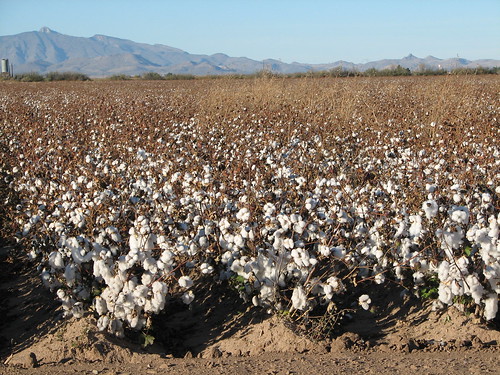February 2013
 |
| Cotton field. Picture by Aileen's Pics on Flickr |
Mexico is the centre of
origin of domesticated cotton. Clearly, steps to protect wild
cotton's natural diversification are critical for conservation and
future breeding.
Despite this, GM cotton has
been cultivated in the north of the country since 1996, and 21 gene
transformation events have been approved there (5,985 permits to sow
GM cotton were issued in the first 12 years).
Genes can escape through
pollen and seeds. Because cotton plants are mainly self-pollinating
and the two species grown commercially in the USA can't hybridise,
there's little opportunity for gene movement through pollen.
However, seeds have plenty of potential for dispersal: they survive
much longer than pollen and can be moved far and wide by water,
weather and birds; once the cotton fibre has been removed, the seeds
end up as truckloads of animal feed (on their way into the human
food-chain) travelling the highways.








_(umaDA0009a).jpg)
